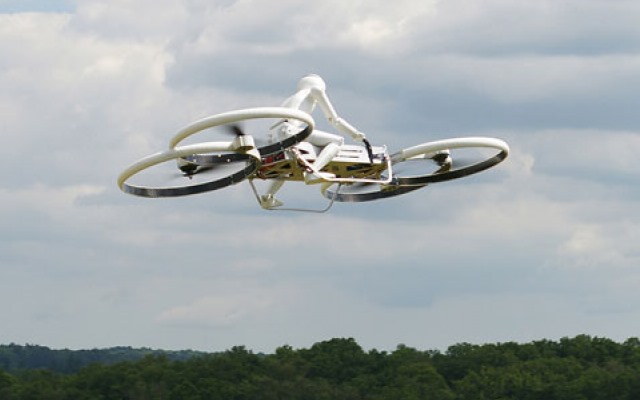New FAA rules could ground Amazon's package delivery drones, require operators to get certified

We always knew that the US government would have a very tough time stopping civilians from using drones -- formally known as unmanned aerial vehicles (UAVs). First of all, they are easily available and can be had for very little money. You can order one today from Amazon for less than $100. And, second, flying does not require the operator to have any special skills, as proven by numerous videos posted by enthusiasts all across YouTube.
So, instead of taking on that Herculean task, the Federal Aviation Administration has come up with a proposed set of rules that aim to regulate the use of small UAVs, weighing less than 55 lbs (or 25 kg), by the civilian sector. And under this new set of rules, Amazon might have to ground its package delivery drones for good. What's more, operators will have to meet certain requirements just to get theirs up from the ground.
The FAA is looking at small UAVs because these are common among enthusiasts. For instance, a DJI Phantom 2 Vision+ comes in at just over 12 pounds, including gear that lets you shoot videos. But more basic drones, like the original Phantom, comes in at just over two pounds, not including any gear. And it is just as ready to fly.
Amazon's package delivery drones are similar, in that they are also light. However, as opposed to UAVs you and I may use, they do not have human operators. And, according to the FAA's proposed set of rules, that is a big no-no.
For small drones to be flown, they must be in the visual line of sight of operators and physically close enough to be seen by operators, "unaided by any device other than corrective lenses". Also, flight is restricted to daylight hours, between the official local sunrise and sunset times to be exact.
So, while Amazon may not be affected by the daylight operation requirement, it would have to employ operators -- who would be required to be in close proximity to the package delivery drone at all times -- to get them off the ground, let alone deliver anything to its customers. It might as well deliver packages the old fashioned way.
Speaking to the Guardian, Amazon vice-president of global public policy Paul Misener admits that "The FAA's proposed rules for small UAS [unmanned aircraft systems] could take one or two years to be adopted and, based on the proposal, even then those rules wouldn't allow Prime Air to operate in the United States". "We are committed to realizing our vision for Prime Air and are prepared to deploy where we have the regulatory support we need", adds Misener.
Fortunately for Amazon, the FAA says that it wants to be flexible in the way it's designing the rules for the civilian use of small drones. "We have tried to be flexible in writing these rules", says FAA administrator Michael Huerta. "We want to maintain today's outstanding level of aviation safety without placing an undue regulatory burden on an emerging industry".
Of course, as technology advances, drones will be easier and safer to operate, and it looks like the FAA is willing to adapt its rules to take this into account. However, at the same time, this may not happen right away, as the proposed set of rules make even flying a small drone more complicated than it currently is.
For instance, operators will have to be over 17 years of age, they have to pass a test at an FAA-approved center and pass a recurrent test every two years, be vetted by the Transportation Security Administration and obtain a UAV operator certificate with a small UAS rating (FAA gives the pilot airman certificates as example).
It's difficult to argue with the FAA on this one, as these requirements could make operators more easily accountable for the way they fly their drones, as well as more responsible. Of course, it doesn't look like the FAA wants to restrict the sale of drones only to those who are certified to fly them, which makes adding the TSA into the mix -- to make sure there are no terrorists trying to use drones, I presume -- questionable.